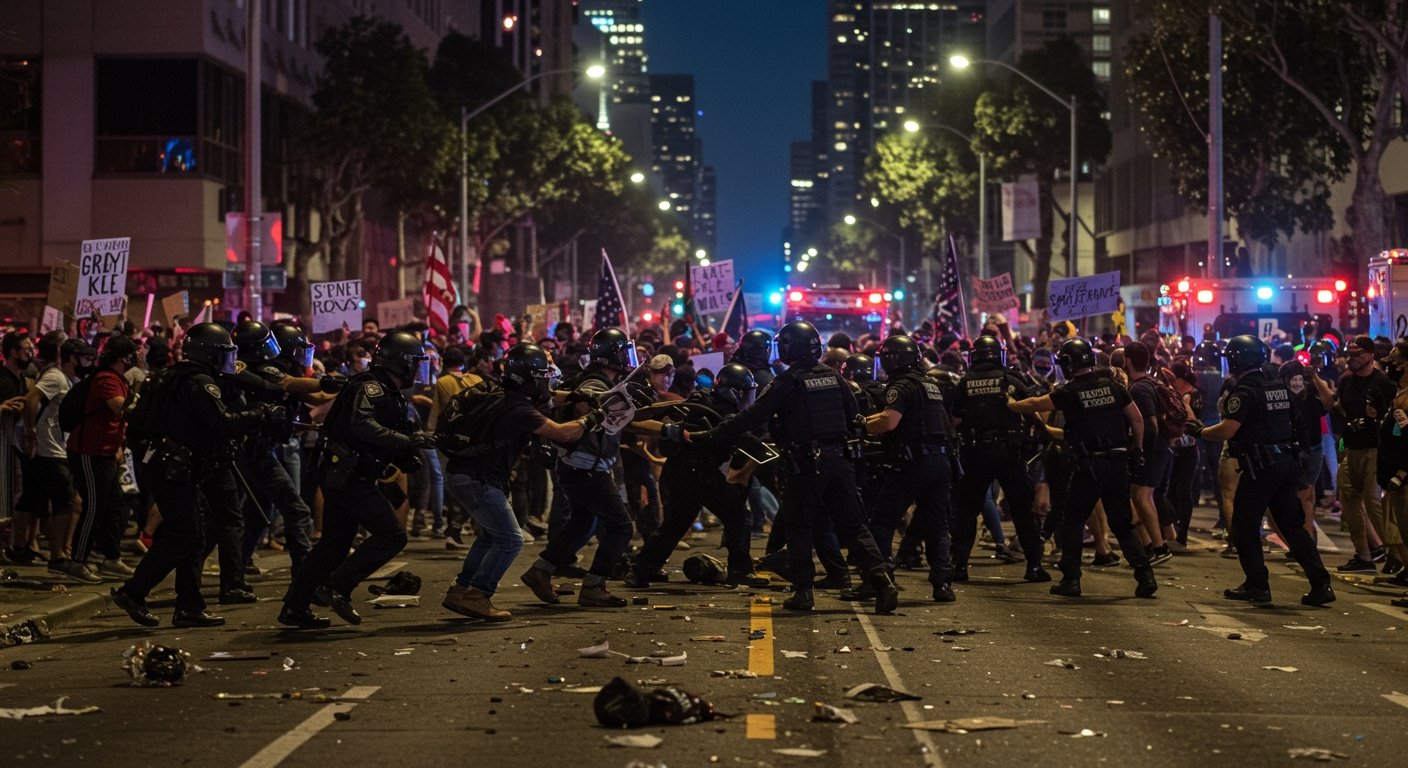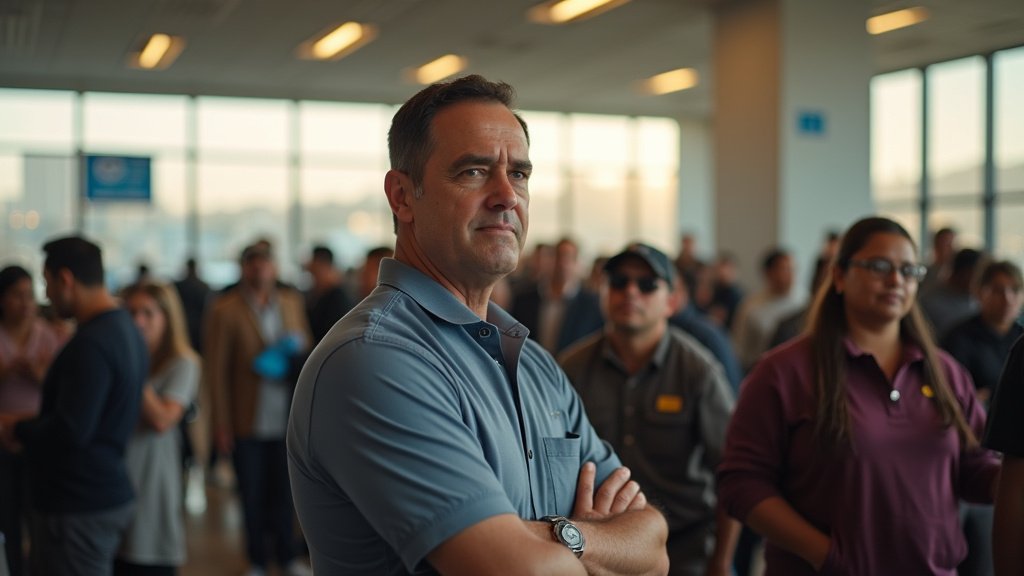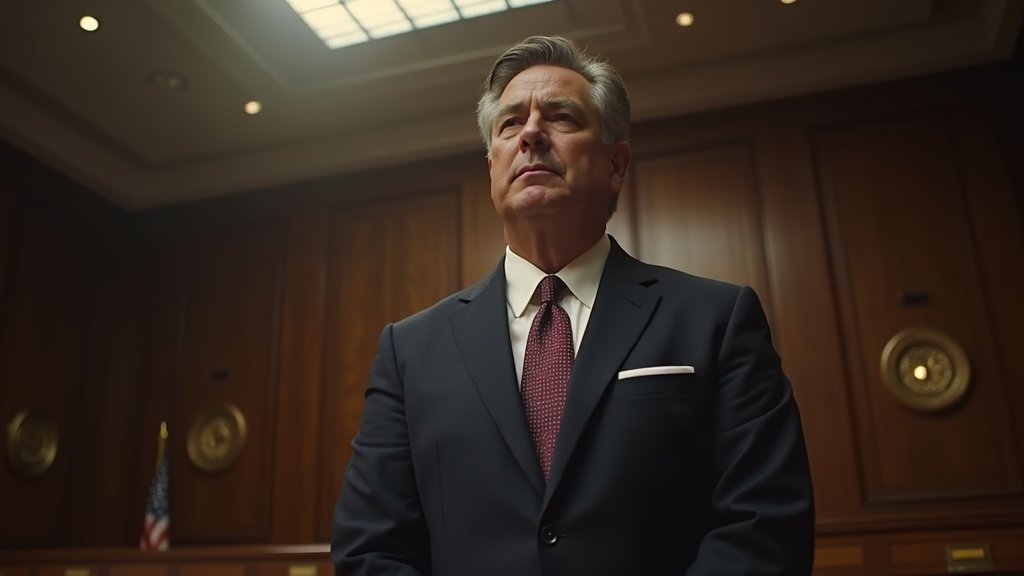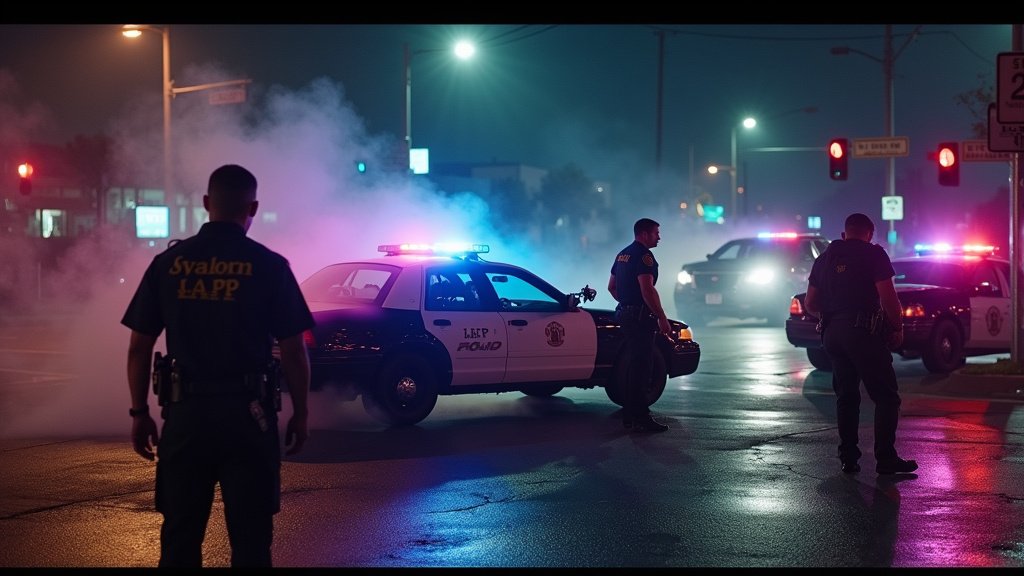Los Angeles has become the epicenter of escalating tensions following aggressive U.S. Immigration and Customs Enforcement (ICE) sweeps, which commenced around June 6. The federal enforcement actions have sparked widespread protests across the city, drawing condemnation from state and local leaders and leading to significant confrontations.
Roots of the Unrest
The immigration enforcement operations, described by critics as sweeps, quickly ignited public outrage. California Governor Gavin Newsom was among the vocal opponents, condemning both the raids and the Trump administration’s broader response to the resulting unrest. Governor Newsom deployed additional California Highway Patrol (CHP) officers to Los Angeles and stated his intention to pursue legal action against the Trump administration over its deployment of the National Guard to the state without his explicit approval.
Los Angeles Mayor Karen Bass also publicly criticized the federal actions. As protests continued and instances of vandalism and looting were reported, Mayor Bass later imposed a curfew for the downtown LA area, effective from 8 p.m. to 6 a.m., in an effort to restore order.
Federal Response and Escalation
In response to the demonstrations and citing a need to protect federal property and personnel and restore order, President Trump authorized a significant federal troop presence in the city. This authorization included the deployment of approximately 700 active-duty Marines and over 2,000 additional National Guard members. This brought the total National Guard presence operating under federal orders in Los Angeles to over 4,100. President Trump also branded the protesters as “paid insurrectionists,” a characterization that further fueled debate surrounding the events.
Confrontations on the Streets
The heightened federal presence coincided with clashes between protesters and federal agents. Reports detailed instances of protesters blocking freeways and throwing objects, while law enforcement and federal agents utilized less-lethal munitions in efforts to disperse crowds and assert control. These confrontations marked a significant escalation in the stand-off between demonstrators and authorities.
Detentions and Legal Challenges
The protests resulted in a substantial number of arrests across the region. By June 12, over 850 people had been arrested in Los Angeles County in connection with the demonstrations. Solidarity protests also emerged in several other U.S. cities, leading to over 150 arrests nationwide in connection with related demonstrations.
Among those impacted was Service Employees International Union (SEIU) California President David Huerta, who reported being injured and detained while documenting a raid. Huerta was later freed after posting a $50,000 bond, highlighting the risks faced by individuals observing and documenting the enforcement actions.
Looking Ahead
The situation in Los Angeles remains fluid, with ongoing tensions between federal authorities, local leadership, and protest groups. The deployments of federal forces, combined with state and local responses, underscore the complex legal and social challenges inherent in the intersection of immigration enforcement, freedom of assembly, and urban governance. The events of the past week have set a precedent for federal intervention in local matters related to immigration enforcement and protest response, leaving the city grappling with immediate consequences and uncertain future dynamics.





